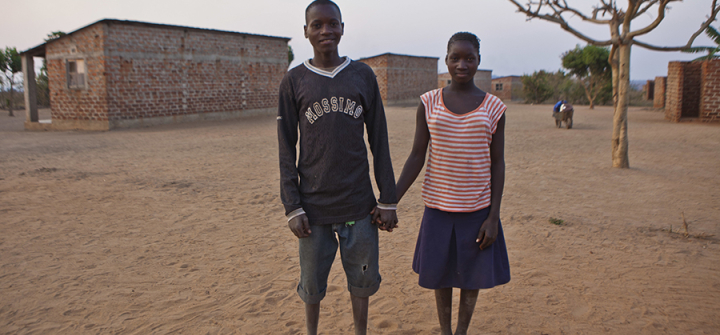We Can Beat AIDS with Youth in the Lead
The future of global HIV response must be very different from today’s efforts. It must be youth focused and youth led. Otherwise, many of our successes against HIV may be endangered by the rapid growth of vulnerable youth populations in the highest burden countries. Nearly two-thirds of Africa’s population is under 25.
Transformative, multisectoral change that takes HIV prevention out of isolation and incorporates youth into every layer of global and domestic decision-making is needed.
Why should youth be central to the fight against HIV? Most healthy young people don’t consider HIV a significant risk. As a result, many do not regularly seek medical care. Recent progress in making clinics friendlier to adolescents is great but not enough to turn the tide of the HIV epidemic among the young. New approaches, such as after school HIV prevention interventions and widespread peer-to-peer support networks and sustainable support for youth-led community-based organizations are needed to effectively meet youth where they are with interventions they will accept.
In addition, young people will rightly tell you that the risk of HIV infection cannot be placed solely on their shoulders. Yes, they can try their best to beat back stigma to access condoms, other contraceptives and HIV pre-exposure prophylaxis (PrEP) medications. But this often means they must endure scolding by health care providers. And overlooked in this equation is transactional sex by older men with young women and girls. This predatory behavior is the major reason that females ages 15–24 years are 3-4X as likely to be HIV-positive as males. This fundamental power imbalance means that, for example, 38% or more of first sex among young girls is forced or coerced in many areas with high HIV rates.
To make progress, the global HIV response must urgently align around 3 key principles:
Listen more. And listen again. Youth need solutions tailored to their needs, preferences, and values. They must be given regular avenues to express their powerful voices in government and civil society policymaking discussions. There are exciting—but still rare examples of where this has been done well. Few government or externally funded HIV prevention programs start by listening to youth and communities, yet they must. And they must do this at scale to be transformative.
Invest in win-wins for youth and public health. Training and hiring a generation of young adults to support the health and wellbeing of their communities focused on youth issues solves 2 problems. First, the challenge of effectively reaching youth with critical HIV prevention and health promotion messages. And, second, the crisis in African youth unemployment that threatens not just health outcomes, but development, democratic gains and potentially security. The need for expanded and well-coordinated community health worker programs is one of the most important areas of consensus in public health. Yet, few countries have achieved this, and fragmentation is the norm. Wage bill limits placed by donors such as the International Monetary Fund have undercut country-led efforts to expand these programs.
Don’t fight HIV in isolation. If there is one thing we hear from young people in our work in Malawi and elsewhere, it is that their immediate concerns often do not relate directly to HIV. They are often most concerned about being able to stay in school (fewer than 10% of young Malawian women aged 20–24 have completed secondary school), preventing unwanted early pregnancies, finding a job, and creating a future for themselves.
Data from PEPFAR’s DREAMS program suggest early success in delivering layered services that combine biomedical with education and economic opportunities. Yet the data also suggest challenges in reaching older, out-of-school, and sexually active adolescent girls and young women.
In addition, the expanded Mexico City policy has been found to reduce access to much needed contraceptive services. This is a big deal in a country like Malawi, where pregnancy is a leading reason girls drop out of school—and studies show that lack of school attendance is associated with higher rates of HIV. So, we cannot be serious about fighting HIV in youth if our policies have the effect of restricting access to family planning.
Creating transformative avenues to listen to youth at every level of government, breaking down barriers to win-win pathways to careers in community health care, and integrating HIV prevention with family planning and other services are the next steps in ending AIDS.
This World AIDS Day, let’s commit to flipping the script and putting youth in the lead.
Maureen Luba Milambe is the Africa region advocacy advisor for the AIDS Vaccine Advocacy Coalition (AVAC), a Women in Global Health LEAD fellow, and a visiting scientist at the Harvard T.H. Chan School of Public Health. Charles Holmes, MD, is faculty co-director at the Center for Global Health Practice and Impact and professor of Medicine at Georgetown University. He served as chief medical officer and deputy US global AIDS coordinator during the Obama administration and is the former CEO of the Centre for Infectious Disease Research in Zambia (CIDRZ).
Join the tens of thousands of subscribers who rely on Global Health NOW summaries and exclusive articles for the latest public health news. Sign up for our free weekday enewsletter, and please share the link with friends and colleagues.
Itayi, 16, and Alice, 13, serve as youth ambassadors raising awareness of HIV in in Mozambique. Image; In Pictures Ltd./Corbis via Getty Images




